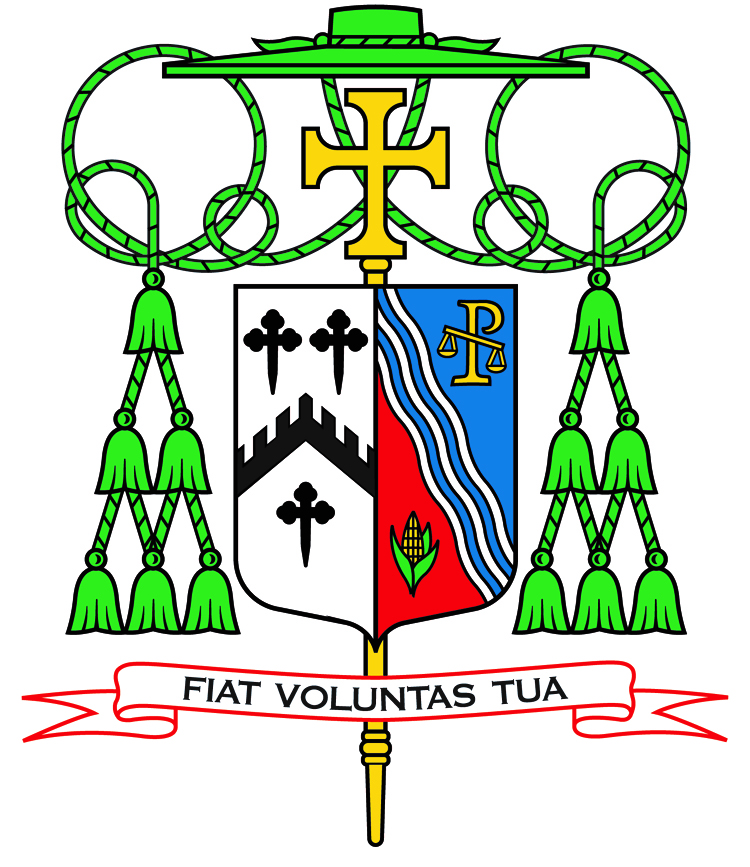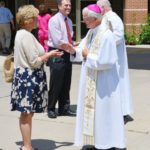
A bishop’s coat of arms joins together the diocesan arms and his personal arms, as is tradition.
The black and white design on the left side of the shield is the diocesan arms. Its design is a variation of the arms of the Davenport family, for whom the city is named.
For his personal arms on the right side of the shield, Bishop Thomas Zinkula opted to use symbols of his life, heritage and ministries. He worked with Deacon Paul Sullivan of the Diocese of Providence, R.I., to create his personal arms.
The three wavy, white lines with blue backdrop represent the Mississippi River, which borders both the Archdiocese of Dubuque, the bishop’s home diocese and where he served as a priest, and the Diocese of Davenport, where he has been called to serve as bishop.
In the upper right of Bishop Zinkula’s arms is a pan-balance, the classic representation of the legal profession of justice and mercy. This symbolism gives homage to Bishop Zinkula’s experience in both civil and canon law.
The ear of corn honors Bishop Zinkula’s family, especially his parents and grandparents who earned a livelihood as Iowa farmers in rural Mount Vernon, Iowa.
For his motto, Bishop Zinkula adopted the phrase from The Lord’s Prayer, “Fiat Voluntas Tua,” which translates to “Your will be done.” He appreciates the gentle, yet profound guidance this phrase offers for living a faithful life in obedience to the Father.
The other traditional elements of the arms include the gold processional cross, which extends above and below the shield, and a pontifical hat, called a galero, with its six tassels, in three rows, on either side of the shield, all in green. The color and design of these elements identify the rank of the bishop.











